I have read that about 14 species of trees make up about 95% of the trees in Colorado. It’s our goal to have images of those 14 trees on this page and perhaps even work on that last 5%. Below are some the trees we have encountered on our hikes and even a few tree related organisms. This also seemed like a good place to put shrubs. So we are going to begin (starting August 2013) to add those guys here as well. We hope you enjoy viewing them as much as we did in finding them.
Quaking Aspen Grove: Populus tremuloides
Castlewood Canyon Hike
Late Spring, Montane
We found this grove of Aspens on the Creek Bottom Trail. The trees had brand new bright green leaves and were beautifully situated among large boulders.
Subalpine Fir: Abies lasiocarpa
Twin Sisters Hike
Late June, Subalpine
There were quite a few trees with bright red immature cones growing. When we were coming back down the mountain we noticed them glowing red like little lights in the trees. I stopped and took a picture of the tree you see above due to the great number of cones it had produced. Notice that the cones point up as well as the needles. This helps to distinguish it from a spruce, such as an Engelmann Spruce. These cones are just really awesome to view.
Purple Erineum Maple Mite on Rocky Mountain Maple Tree: Eriophyes calcercis on Acer glabrum
Ouzel Lake Hike
Late June, Montane to Subalpine
As we were walking on the beginning of our trek I noticed a Rocky Mountain Maple (Acer glabrum) with bright red spots on it. At first I thought it was a fungus or lichen growing on the leaf, but after research at home I discovered it was a type of mite (Eriophyes calcercis) living on the leaf. These mites are pests to the trees and cause abnormalities on the leaves such as galls. The mites themselves are very very small and can only be seen with a microscope, click on the image to view the mites in more detail. To check out more info on the organism visit the USDA site.
Wild Red Raspberry: Rubus idaeus or Rubus strigosus
Horseshoe Falls
Montane, August
This is a wild raspberry! The berries are edible and it is a relatively easy plant to identify. Black raspberry (R. leucodermis) looks similar to wild red raspberry — in fact they are in the same genus — but has thorny stems and woolly leaves. However, both species are edible. In times past the leaves were either dried or used fresh to make a medicinal tea. Modern pharmacological evidence backs up this practice in finding an anti-spasmodic compound in raspberry tea and it can be given to women with painful menstrual cramps. However, making a tea out of wilted leaves is ill advised due to its toxicity.
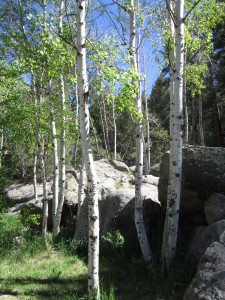
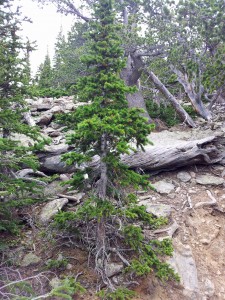
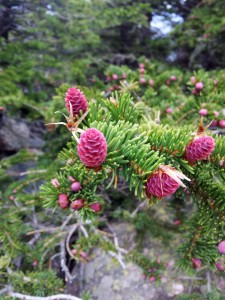
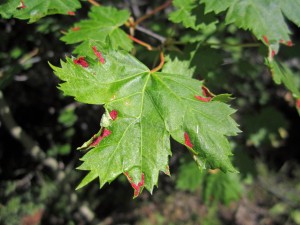
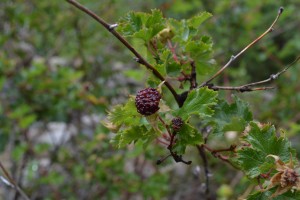
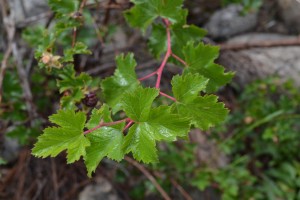
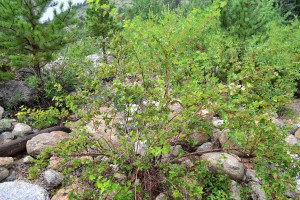
Will the mites eventually kill the tree?
The mites damage the leaves and can eventually kill the leaf, but the tree should be ok. I haven’t read anything about the mites killing trees like the pine beetles. Although, I wouldn’t be surprised if they weaken the tree to a point where the tree succumbs to something else (like drought) in the event of a large infestation.
Imagine, pink pinecones?!!!
Could I order the Aspens photo in an 8″ x
16″ size print?
Really love it!
I ❤️ the pink cones!